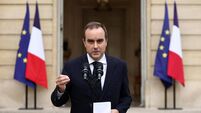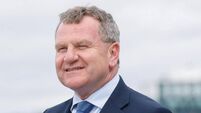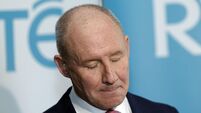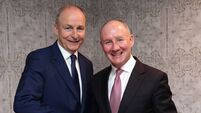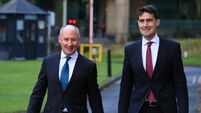European Central Bank's 'approach to monetary policy must remain open-minded', says chief economist
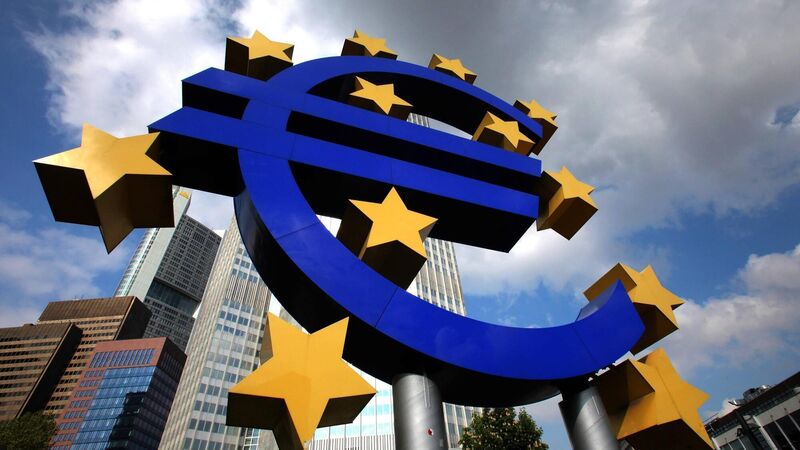
The September European Central Bank staff projections saw inflation slowing down to 1.7% next year before returning to 1.9% in 2027. File Picture: Hannelore Foerster/Bloomberg via Getty
Two of the European Central Bank’s top policymakers described an inflation outlook that doesn’t face prevailing risks in either direction, suggesting that they have no inclination to move interest rates for now.
Chief economist Philip Lane and vice president Luis de Guindos acknowledged that a variety of factors to influence consumer prices in both an upward and downward direction.
“We could say that risks for inflation are balanced, we’re meeting our projections, and price stability could be somehow guaranteed,” Mr Guindos said at conference in Madrid on Monday.
“We consider our current levels appropriate. Appropriate based on recent inflation, our own inflation projections for the coming years, and also on monetary policy transmission.”
Most policymakers say they’re comfortable with current monetary policy settings, arguing that there would need to be major deviations from their baseline scenario to justify further easing after eight quarter-point reductions within a year.
The September staff projections saw inflation slowing down to 1.7% next year before returning to 1.9% in 2027, while growth is expected to gain momentum — mainly due to increased fiscal spending in Germany and elsewhere.
Mr Lane suggested that while he himself has no bias toward acting at present, he described the potential choice for policymakers to being between staying on hold and cutting rates further.
“An increase in the likelihood or intensity of downside risk factors would strengthen the case that a slightly lower policy rate might better protect the medium-term inflation target,” he said.
“Alternatively, an increase in the likelihood or intensity of upside risk factors would indicate that maintaining the current policy rate would be appropriate in the near term.”
Addressing a conference in Frankfurt, the chief economist stressed that “procedurally, our approach to monetary policy must remain open-minded if we are to properly incorporate the evolving information on the inflation outlook and the surrounding risks".
Mr Guindos also highlighted that the outlook remained opaque even after a US-EU trade deal was agreed.
“We can not understand what will be the future of monetary policy decisions if we don’t take into account the very high uncertainty level that still remains,” he said.
“Our approach is largely cautious. We don’t have any predetermined path on rates evolution, we’ll take decisions based on data.”
- Bloomberg



